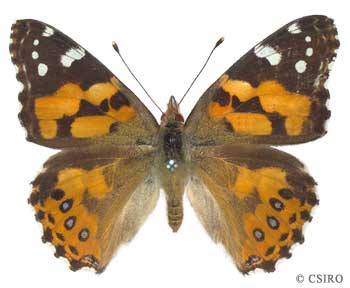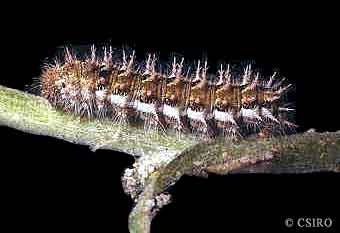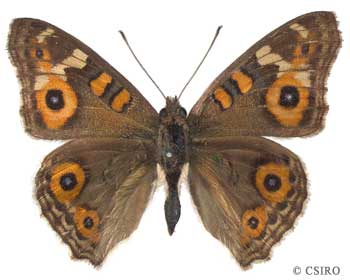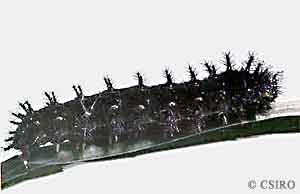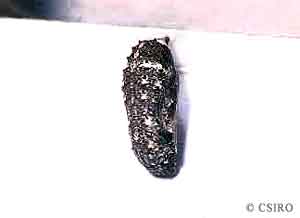
|
|
| ||||||||||||
|
This family of butterflies are usually referred to collectively as the browns, although some species may be commonly known as 'wanders, crows, nymphs or glasswings'. Most of these butterflies have a combination of browns on their wings, sometimes with concentric spots. One of the best identification features of this family is the underdeveloped, short, hairy forelegs and the long hind legs. The caterpillars of the Nymphalids are often spiny having long, paired filaments that look like anemone tentacles on some of their body segments. They are usually patterned with concentric stripes. Subfamily: Nymphalinae Most species in this family are medium sized, sun-loving butterflies and are recognised by their rapid, direct flight and the tendency to settle on the ground with their brightly coloured wings outstretched. The adults feed mostly at flowers, although they have been observed feeding on fermenting sap flows, fruit juices and fresh animal dung. Some species show migratory behaviour.
This is one of the best known species of butterflies and belongs to a group commonly known as 'painted ladies'. Painted ladies are found throughout the world and most have a strong migratory nature. The Australian painted lady is found throughout the year in most areas except during June and July in the colder areas. In spring and early summer in eastern Australia large numbers can be seen as the butterflies take wing and set off in a south, south-westerly direction. Adults are recognisable by their colouring and can often be observed feeding on many types of flowering plants. Adults have a wingspan of about 53 millimetres across and are brown and orange in colour with 4 small blue eyespots in the orange section of the hind wings. The forewings are usually black with orange markings on the bottom half and white spots near the tips.
This species is commonly known as the 'meadow argus' and in flight can be mistaken for the Australian painted lady. However it is easily distinguished from the latter by the 2 prominent eyespots that occur on the upper side of each wing. These eyespots are usually ringed with orange, which may be joining them together. The overall colour of the wings is brown and along with the eyespots the forewings have 2 orange bars with dark brown edges, separated by a dull blue band. It has a wingspan of about 45 millimetres.
The larvae are most commonly black and are covered with short, thick black spines. They feed on a wide range of native daisies and other herbaceous plants, both native and introduced.
The pupae are variable in colour but are more commonly brown or dull black with white to yellow patches and can often be found suspended from the food plant or nearby walls and fences. Adults sometimes migrate but are most commonly seen flying rapidly close to the ground in a series of one to two quick wing beats followed by a short glide. They will often land frequently on the ground in a cleared area or open spot. For more admirals, browns or fritillaries visit the Australian Insect Common Names - Nymphalidae section found here. |
